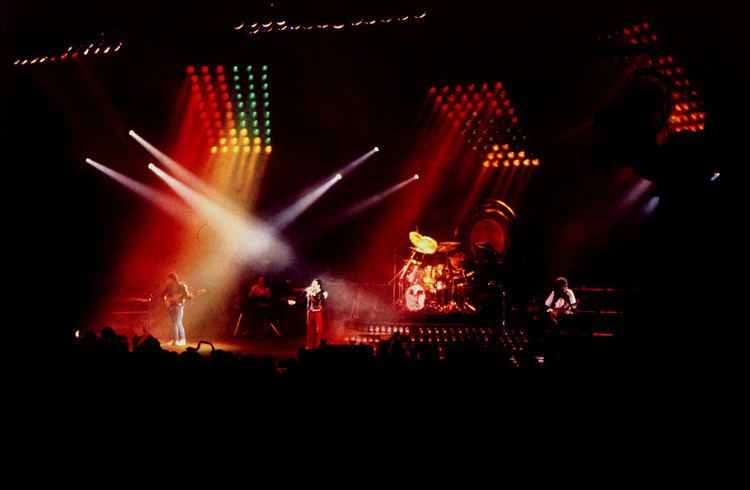Cultural origins Mid-1970s | ||
 | ||
Stylistic origins Rockhard rockheavy metal Typical instruments Vocalsguitarbassdrumskeyboard | ||
Arena rock (variously known as "pomp rock", "stadium rock", "anthem rock", "corporate rock", "melodic rock", "dad rock", or "album-oriented rock") is a style of rock music that originated in the mid 1970s. As hard rock and indie rock bands became increasingly popular, arena rock developed from their use of more commercially oriented and radio-friendly sounds, with highly-produced music that includes both rockers and power ballads, both often employing anthemic choruses.
Contents
History
In the mid-1970s, increased power of amplification and sound systems allowed the use of larger and larger venues. Smoke, fireworks and sophisticated lighting shows became staples of arena-rock performances. It has been argued that the rise of arena rock marked the end of the idealism of the 1960s, particularly in the disillusionment that followed the Altamont Free Concert of 1969, for a more commercial form of rock.
The use of commercial sponsorship for the large-scale tours and concerts of this era began to lead to the music being branded, usually pejoratively, as corporate rock. The popularity of stadium rock resulted in a number of reactions, including the pub rock and punk rock movements in the 1970s. In the 1980s, arena rock became dominated by glam metal bands, following the lead of Aerosmith and including Mötley Crüe, Quiet Riot, W.A.S.P. and Ratt. Their popularity was challenged by the alternative rock bands who began to breakthrough to the mainstream, particularly after the success of Nirvana, from the early 1990s.
List of artists
Arena rock
